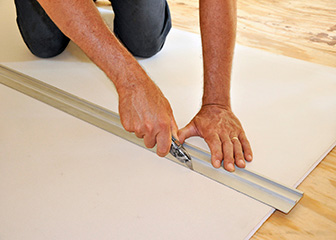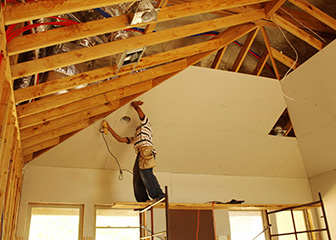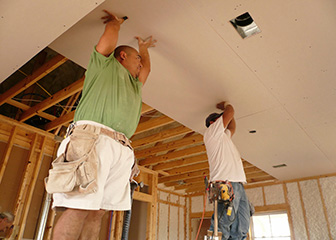Summary

| Quick Facts: Drywall and Ceiling Tile Installers, and Tapers | |
|---|---|
|
$38,290 per year
$18.41 per hour |
|
| Less than high school | |
| None | |
| Moderate-term on-the-job training | |
| 129,600 | |
| 29% (Much faster than average) | |
| 37,300 | |
What Drywall and Ceiling Tile Installers, and Tapers Do
Drywall and ceiling tile installers hang wallboards to walls and ceilings inside buildings. Tapers prepare the wallboards for painting, using tape and other materials. Many workers do both installing and taping.
Work Environment
Drywall and ceiling tile installers and tapers spend most of the day standing, bending, or stretching. Injuries include falls from ladders or stilts, cuts from sharp tools, and muscle strains from lifting heavy materials. The work also can be dusty, irritating the skin, eyes, and lungs.
How to Become a Drywall and Ceiling Tile Installer, or Taper
Although most drywall and ceiling tile installers and tapers learn their trade informally on the job, a few learn through a formal apprenticeship.
Pay
In May 2010, the median annual wage of drywall and ceiling tile installers was $37,320, and the median annual wage of tapers was $45,490.
Job Outlook
Employment of drywall and ceiling tile installers and tapers is projected to grow 29 percent from 2010 to 2020, much faster than the average for all occupations. Skilled workers with a good work history and experience in the construction industry should have the best job opportunities.
Similar Occupations
Compare the job duties, education, job growth, and pay of drywall and ceiling tile installers, and tapers with similar occupations.
O*NET
O*NET provides comprehensive information on key characteristics of workers and occupations.
Contacts for More Information
Learn more about drywall and ceiling tile installers, and tapers by contacting these additional resources.











